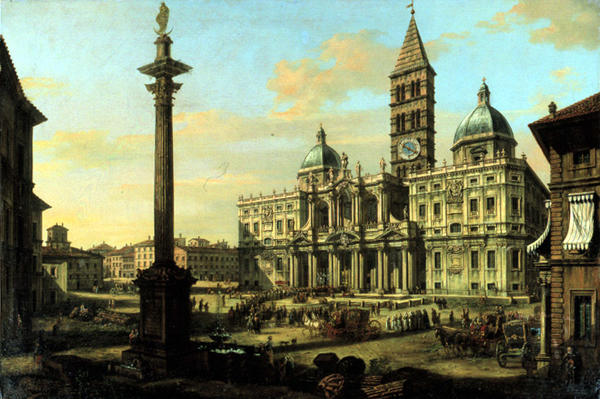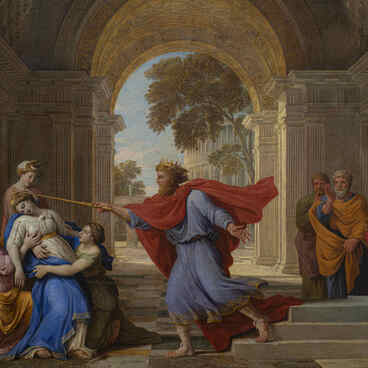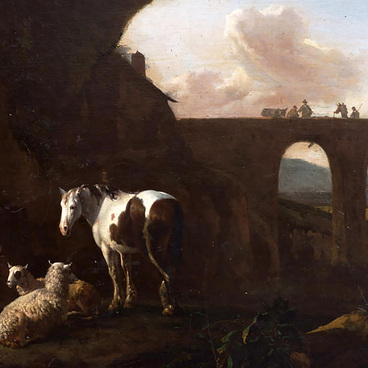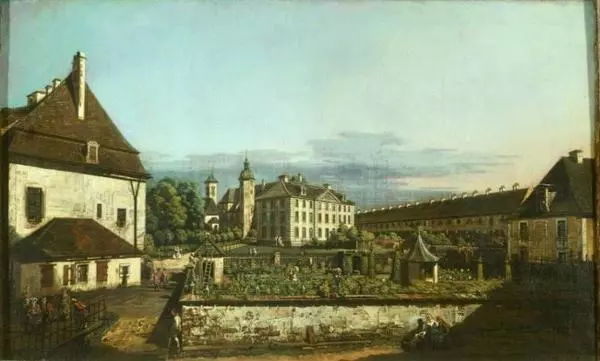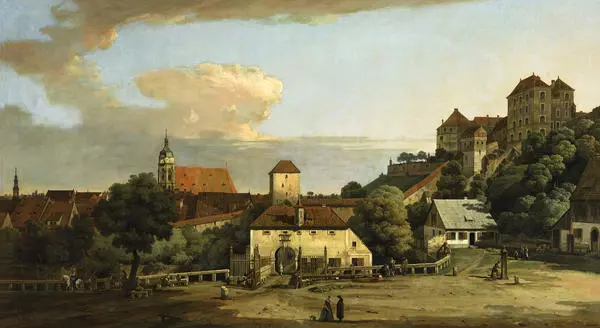Bernardo Francesco Paolo Ernesto Bellotto was an 18th-century Italian painter and urban landscape artist. He was taught by his uncle Antonio Canal, the founder of the Venetian school of veduta — a highly detailed and accurate architectural landscape. Guided by his painter relative, Bellotto became a brilliant master of the genre and also excelled in capriccio landscapes. Capriccio is a landscape depicting the ruins of ancient temples and other structures, both real and fictional. It is not surprising that capriccio won the greatest recognition in Italy, primarily because of the great number of Roman ruins and remnants of ancient art throughout the country.
“The Church of Santa Maria Maggiore”, among other works by Bellotto, is part of his series “Views of Rome”. It was created at a time when he lived and worked in Warsaw as a court painter to Polish King Stanislaw Augustus Poniatowski. The painter used his memories as well as the engravings by Giovanni Battista Piranesi, an Italian architect, archaeologist, and graphic artist, to paint his pictures. They helped Bellotto accurately reproduce views of the Eternal City.
The composition of the painting is almost identical to the one in the engraving, apart from a few exceptions. Bellotto adds a crowd in front of the temple as staffage — background figures — and slightly expands the composition by enlarging part of the building on the right. The clock on the tower is depicted with a slight distortion of perspective — which is also noticeable in the black-and-white work.
The Church of Santa Maria Maggiore is one of the four major basilicas in Rome. There is a legend about its origins. In the 14th century, the Roman bishop Liberius had a vision of the Virgin Mary, who commanded him to build a church in her honor in the place where snow would fall the next day. This was at the beginning of August, the hottest month in Italy. But indeed the next morning it began to snow on the Esquilino Hill, one of the seven hills of Rome. So Liberius ordered to build there the Basilica of Santa Maria della Neve, translated as the Virgin Mary of the Snow. The church got its modern name a century later.
The basilica was rebuilt many times, its architecture changed. The church got its final form in 1750 under the guidance of the architect Ferdinando Fuga. The interior was designed in an elegant paleochristian style. And the facade of the building is a mixture of Romanesque and Baroque styles. The basilica’s bell tower, measuring 75 meters in height, is the tallest in Rome.
“The Church of Santa Maria Maggiore”, among other works by Bellotto, is part of his series “Views of Rome”. It was created at a time when he lived and worked in Warsaw as a court painter to Polish King Stanislaw Augustus Poniatowski. The painter used his memories as well as the engravings by Giovanni Battista Piranesi, an Italian architect, archaeologist, and graphic artist, to paint his pictures. They helped Bellotto accurately reproduce views of the Eternal City.
The composition of the painting is almost identical to the one in the engraving, apart from a few exceptions. Bellotto adds a crowd in front of the temple as staffage — background figures — and slightly expands the composition by enlarging part of the building on the right. The clock on the tower is depicted with a slight distortion of perspective — which is also noticeable in the black-and-white work.
The Church of Santa Maria Maggiore is one of the four major basilicas in Rome. There is a legend about its origins. In the 14th century, the Roman bishop Liberius had a vision of the Virgin Mary, who commanded him to build a church in her honor in the place where snow would fall the next day. This was at the beginning of August, the hottest month in Italy. But indeed the next morning it began to snow on the Esquilino Hill, one of the seven hills of Rome. So Liberius ordered to build there the Basilica of Santa Maria della Neve, translated as the Virgin Mary of the Snow. The church got its modern name a century later.
The basilica was rebuilt many times, its architecture changed. The church got its final form in 1750 under the guidance of the architect Ferdinando Fuga. The interior was designed in an elegant paleochristian style. And the facade of the building is a mixture of Romanesque and Baroque styles. The basilica’s bell tower, measuring 75 meters in height, is the tallest in Rome.

